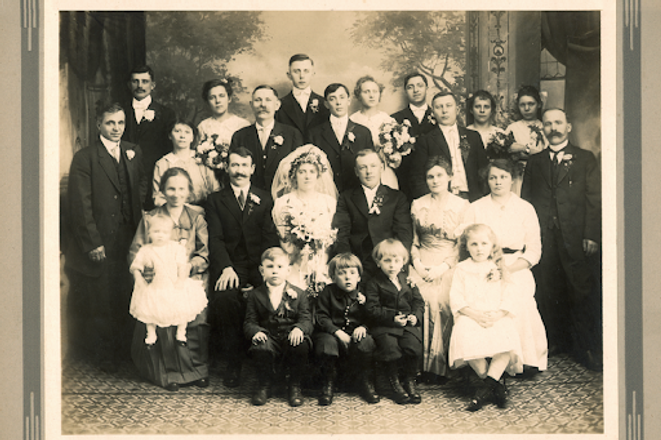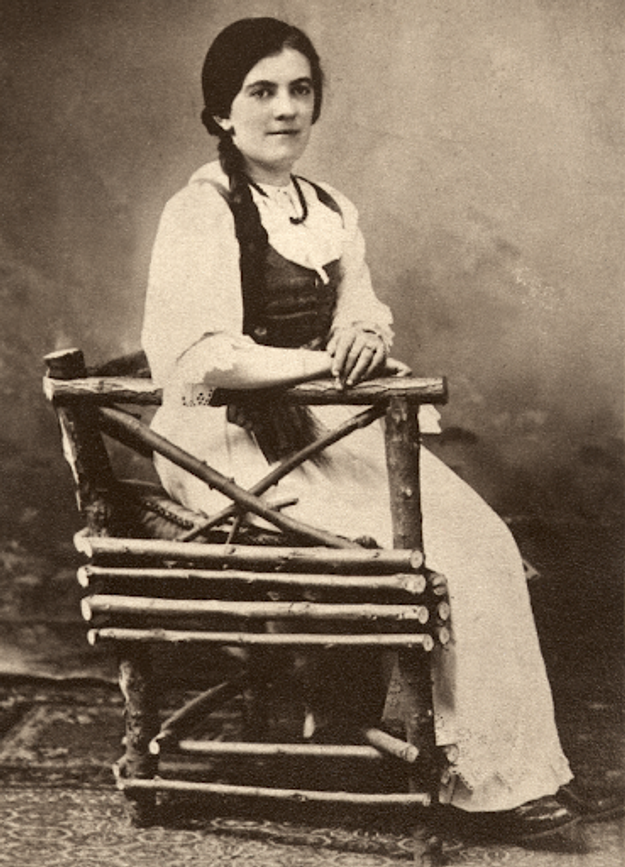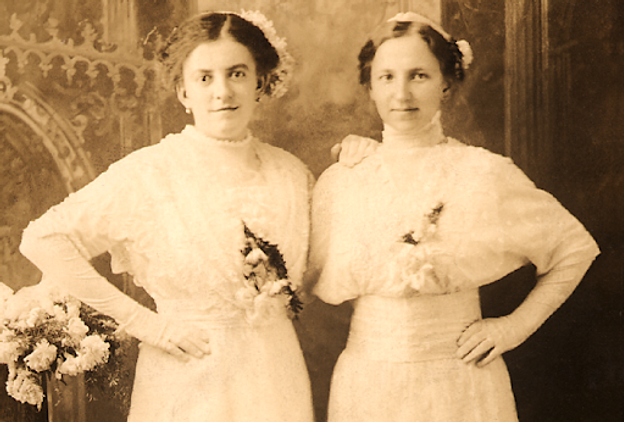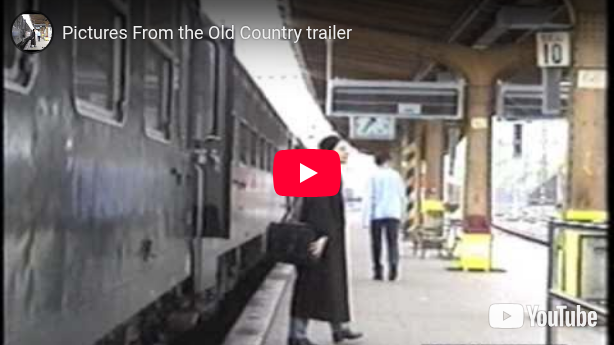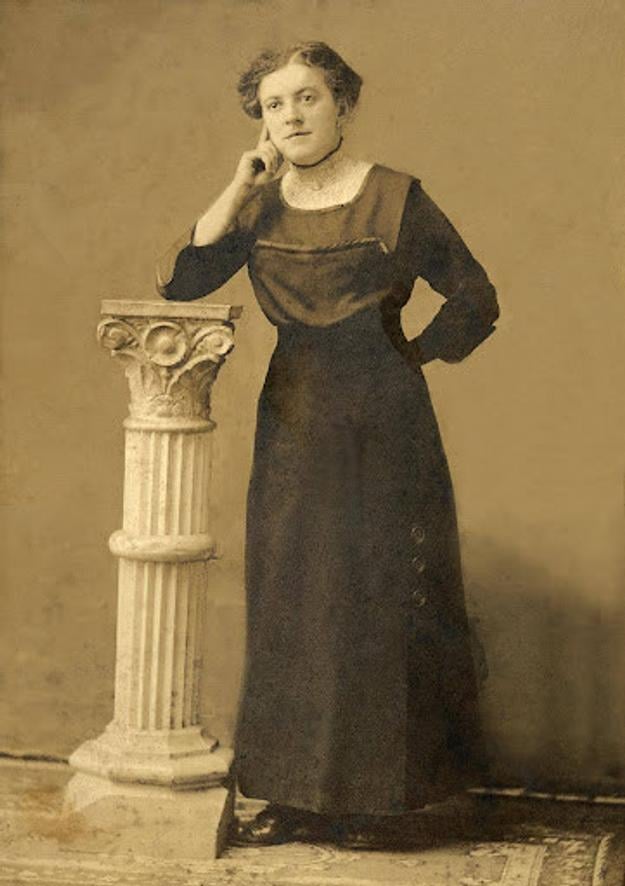Susan Marcinkus’ story is part of a Global Slovakia Project- Slovak Settlers, authored by Zuzana Palovic and Gabriela Bereghazyova. The book is available for purchase via info.globalslovakia@gmail.com.
My journey began as a young girl in Kenosha, Wisconsin, during the height of the Cold War with an immigrant grandmother who had a foreign sounding name and the heavy accent to go along with it. The fact that my grandmother, Judita Marčeková Korbelová, spoke an “unusual” language intrigued me. It was a language she would speak only with my mother and uncles in hushed tones and late at night, after my bedtime, as if they had something to hide from us children. It haunted me. Endowed with a rich and active imagination and, influenced by the climate of paranoia toward the communist bloc countries, I thought it sounded suspiciously like Russian, and even fantasized that “Gram” was a communist spy!
As a very curious little girl, I asked many questions and would occasionally quiz Gram about her past, but she would always change the subject. Her reticence was palpable. All I managed to learn was that she was from a place called “the Old Country”. By the age of seven or eight, I finally learned her homeland was a place called Czechoslovakia. Sometimes, I’d come across a clue to the culture she’d left behind, like the miniature doll I’d found in her sewing basket one evening, dressed exquisitely in the colorful folk dress of her Slovak people. With its elaborate headpiece, satin vest, tiny beads and delicate bobbin lace, it was dressed so differently than all the other dolls I’d ever played with. I wondered why she’d never shown it to me…
I wanted to know more; the questions flooded my thoughts -- What is Grandma whispering about? Where is this mysterious “Old Country” she mentions? Why did she leave her homeland? What is she hiding from me? I always had a sense that there was a whole other world my grandmother came from, and I needed to experience it.
I resolved that one day I would figure out the secrets of my grandmother’s past in the “Old Country”. But in the meantime, Gram taught me to sew, and design patterns for my clothes. We would go fabric shopping together and she taught me to appreciate the use of fine silks, satin, laces and brocades. She encouraged me to draw and paint and express myself with color.
Gram died while I was away at college; I filed away the issue of her homeland and pursued a career in the arts. I received a master's degree in film and TV directing from the American Film Institute and worked in Los Angeles, CA - editing, directing, and producing award-winning films and TV shows.
But my curiosity about my Slovak roots revived again in the 1980’s when I was on a film project in Vienna. Perhaps it was inevitable that I managed to make a day-trip to nearby Bratislava, Czechoslovakia. Something was pulling me. After being detained at the border for hours by communist guards, I had only a partial day in the ancient city. What intrigued me the most was for the very first time, I heard everyone in their daily lives speaking that same tongue I’d heard only during nighttime whispers when I was a child. As I walked the Old Town streets and gazed up to its castle, I had an overwhelming sensation that I’d been there before. The connection was electrifying. I promised myself I’d return again soon…
On the plane ride home, I couldn’t stop recreating the experience with images, textures, stories and music. I decided to pursue an investigation into my Slovak roots and identity, and write a film treatment for a documentary that chronicled my quest. After returning to my job and my family in Los Angeles, I began correspondence with my grandmother’s Slovak church in Kenosha. She had been a founding member of St. John’s Lutheran Church and through their archival records, I eventually found the name of Gram’s native village, Jahodníky, Svätý Martin. This information was an important key to opening doors along my journey.
After the communist regime tumbled in Czechoslovakia during the 1989 Velvet Revolution, I was awarded the opportunity to finally return to Slovakia on a Yale University Masaryk Fellowship in 1992. There I taught English to graduate students in International Relations at Comenius University in Bratislava. With a video camera in hand, I was able to capture the excitement of living in the land of my ancestors. Yet there were many surprises in my quest – the biggest being the upcoming split between the Czechs and Slovaks.
Somehow it seemed both appropriate and ironic that I should find myself in Slovakia searching for my own identity at a time when the Slovak people were reexamining their own identity. Slovakia and the Czech lands were preparing to split their country over national and economic differences and I was able to learn about these historic changes firsthand. I interviewed many important Slovak personalities -- among them were Miroslav Kusý, Václav Havel's chief deputy in Slovakia and rector of Comenius University, and Juraj Jakubisko, Slovakia's leading film director. As I learned about Slovak politics and history from them, I was truly beginning to understand the Slovak character and point-of-view on the world.
Meanwhile, I was quickly realizing that I didn’t have sufficient time or information to find my grandmother’s birthplace or family members. I managed to travel to Martin, which I had surmised was the general region of her birth in central Slovakia. But with a population of over 60,000 people, it was hardly the ancestral “village” I had in mind. Records gave Jahodníky, Svätý Martin as her birthplace, but there just wasn’t enough time to find the Jahodníky connection to Martin. I had barely scratched the surface of my search. I returned to LA, where in my free time I continued with my research and writing and began shaping the material I had photographed.
More determined than ever, I returned to Slovakia with a film crew in the late 1990's, this time with the intent of finding my grandmother’s birthplace, meet with her remaining family members, and to explore the history of her home turf. I took on the role of detective. Eventually my sleuthing resulted in a meeting with a Slovak man named Marček whose father had worked in Chicago, but he knew nothing of my grandmother or her family. He pulled out a photo of a wedding his father attended. I saw the name of a Kenosha, Wisconsin photo studio on the frame. I noticed the bride looked like my grandmother might have as a young woman, but it was difficult to know for sure. I realized I’d never seen a photo of my grandmother’s wedding. Was it her; could it be? He gave me the photo; I felt I was getting closer.
I got another tip about a genealogist who lived nearby, a woman named Kamila Chudá. She told me there was once a village called Jahodníky, now incorporated into Martin, as I had suspected. Just two days before I was to leave Slovakia, Kamila and I, with the help of librarians, archivists, and a village elder, finally succeeded in finding my grandmother’s family in Kláštor pod Znievom, a village just outside of Martin. We were invited for a visit the next day. Our camera crew captured every moment as my second cousins, daughters of the sisters my grandmother had left behind, and their families, greeted us with open arms, tears, and shots of slivovica!
Out came the old photos, including the same wedding pose taken in Kenosha. So indeed it was my grandmother. How fitting that I saw it for the first time in Slovakia. And during a truly magical moment, they took us upstairs and brought out my grandmother’s very first sewing machine. Cousin Anna had actually saved it all these years.
I found out from my new-found relatives that my grandmother’s skill as a seamstress was her ticket to America. She emigrated alone in 1913 at the age of 22, married and raised four children. Like many Slovak immigrant women, my grandmother earned a living doing housework, cooking and sewing. Eventually she obtained full time work as a seamstress for Jockey Clothing company. Her Slovak relatives imagined that she had led a comfortable life, but in reality, her life had been quite difficult. My grandmother struggled to assimilate and define herself as an American, while Cold War realities severed ties to her family back home. She had a need to give her children the opportunity to live their lives with the promise of freedom, education and prosperity – the things she never had growing up in the old country.
Making the documentary film, Pictures From the Old Country, has enabled me to satisfy the deep longing I had to connect with my ancestral legacy and family history that I hadn’t known before. And I learned with a great deal of pride that the citizens of this region had been at the historical forefront of the Slovak "National Awakening", Slovakia's renaissance of literacy, culture and national pride in the mid-1800's.
In a cycle that started at the beginning of the 20th century, when my grandmother left Slovakia forever to emigrate to America, I returned there at the very end of the century, to reconnect with my family and our cultural heritage. Through the making of my film, I was left with a realization of the huge debt owed to my grandmother. I understand now the incredible struggle she experienced in Slovakia and then in the US. She bravely paved the way for the freedom and opportunity that I, my sisters, my mom and her siblings were able to have in this country. I was taken out of my selfish little world as I discovered a beautiful land, a rich culture and a new and profound sense of my own Slovak heritage.
It may have taken me half a lifetime, but I think I finally understand the meaning behind those whispers of the past.

